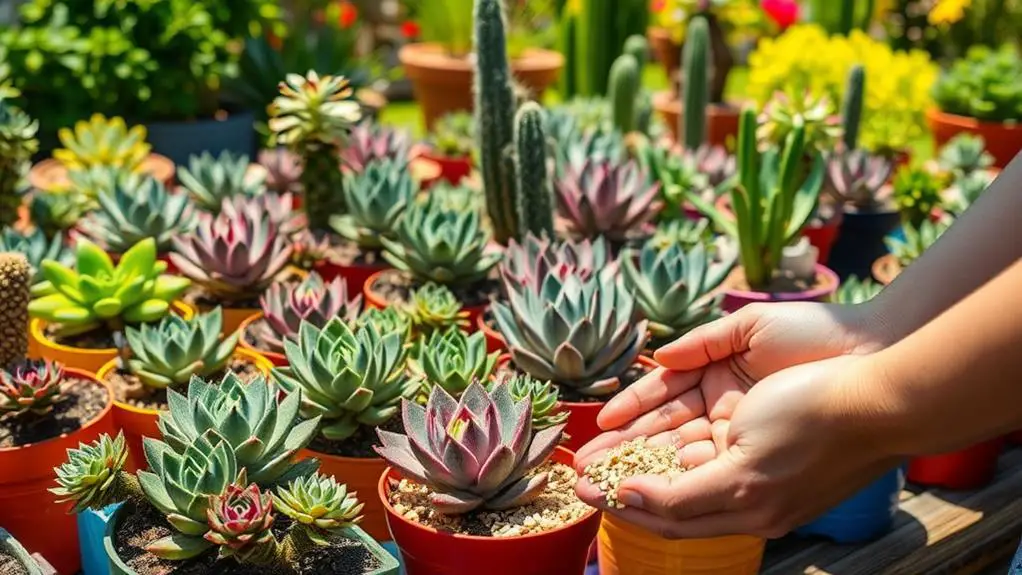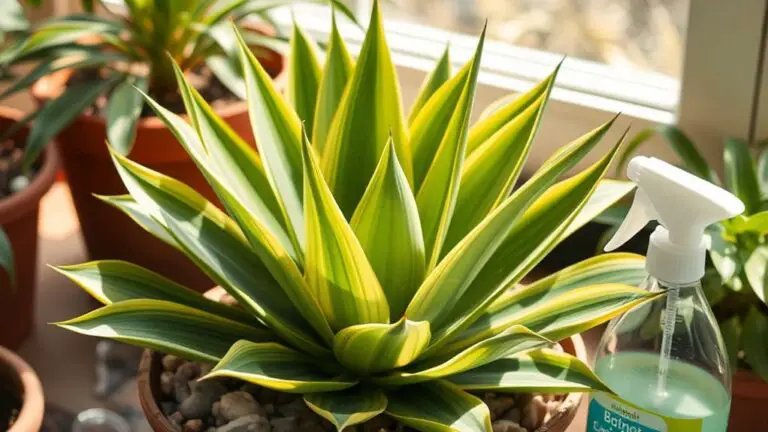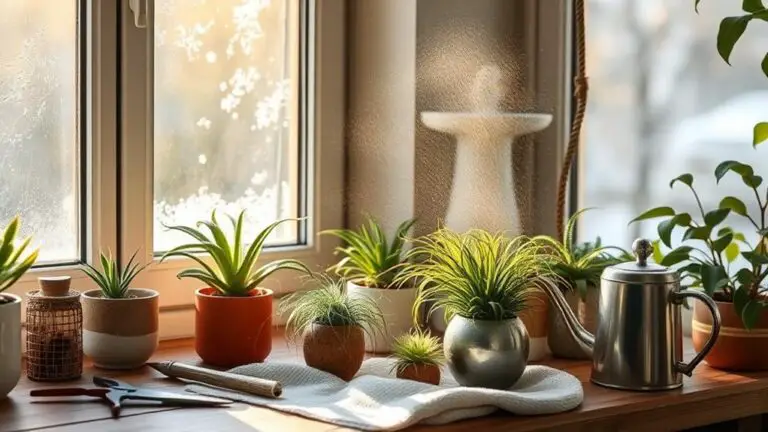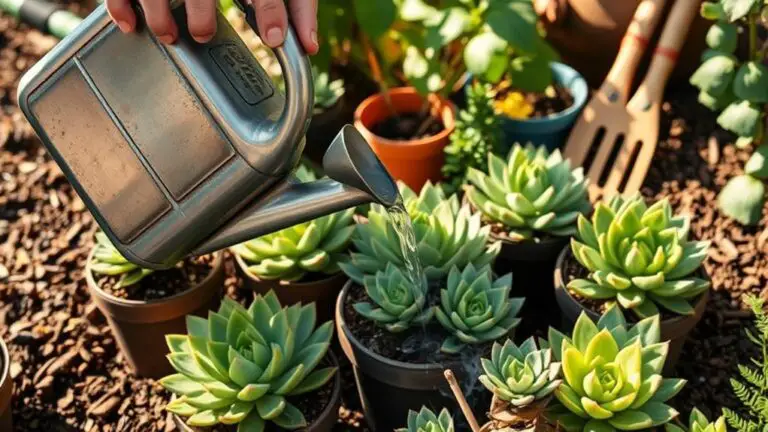The Ultimate Guide to Fertilizing Succulents
When it comes to ensuring your succulents thrive, understanding the nuances of fertilization is essential. You might think these hardy plants need minimal care, but providing the right nutrients during their growing season can make a significant difference. From choosing between organic and slow-release fertilizers to mastering application techniques, each step is vital. But how do you know which fertilizer type best suits your plants, and what common mistakes should you avoid? Let's explore these questions and more to help you cultivate the healthiest succulents possible.
Importance of Fertilizing Succulents
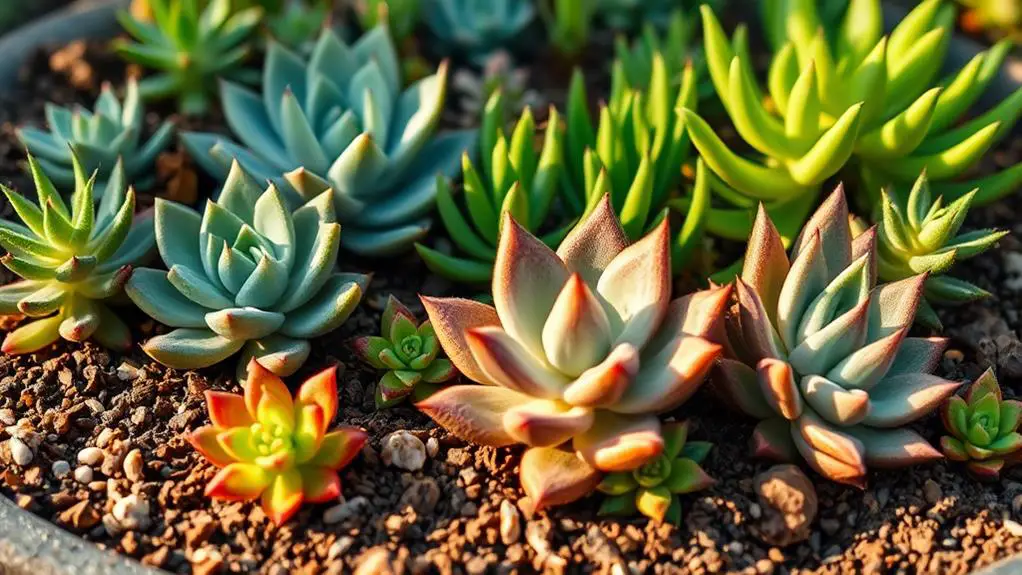
Fertilizing succulents is essential because it provides critical nutrients like nitrogen, phosphorus, and potassium that these plants need for their physiological processes and overall health.
Although succulents are adapted to survive in nutrient-poor soils, they still benefit greatly from occasional fertilization, especially during their active growing season. This practice promotes healthy growth, vibrant colors, and successful blooming.
Regular fertilization helps prevent nutrient depletion, which can quickly occur in potted soil. Without these critical nutrients, succulents might experience stunted growth and reduced plant health.
However, it's important to apply fertilizers correctly to avoid over-fertilization, which can cause root burn and soil pollution. Moderation is key, confirming that you provide just enough nutrients without overwhelming the plant.
Using fertilizers with balanced NPK ratios confirms that succulents receive the right mix of nutrients they need. This balance supports their growth without the risks associated with over-fertilization.
Always remember, a little goes a long way. By understanding the significance of fertilizing succulents and applying this knowledge, you'll help your plants thrive and maintain their beauty.
This approach confirms your succulents remain healthy and vibrant all year round.
Different Types of Fertilizers
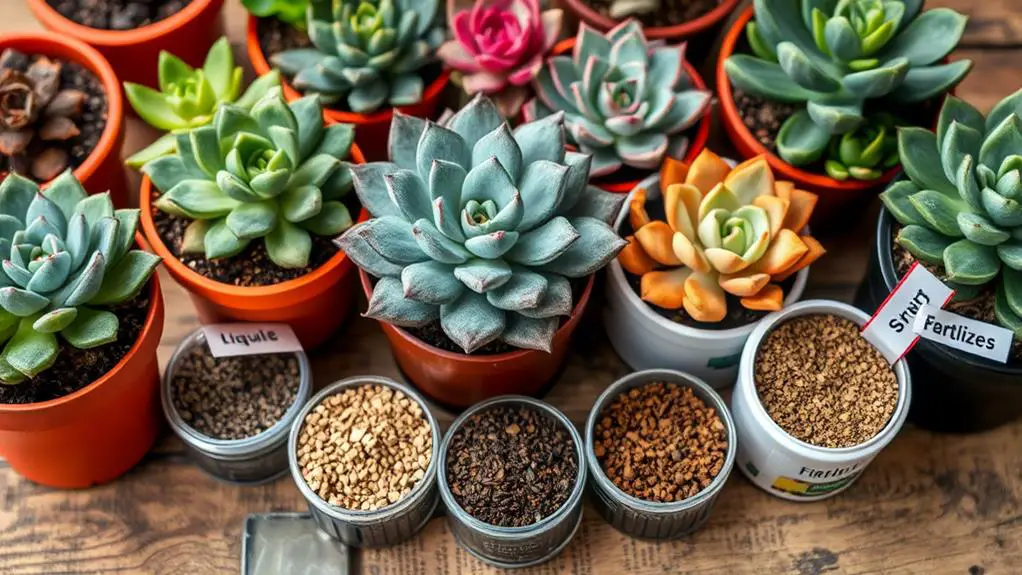
While understanding the importance of fertilizing succulents is fundamental, knowing the different types of fertilizers available can make a significant impact on your plants' health.
There are several options to evaluate, each with its own benefits and application methods.
- Organic Fertilizers: These are derived from natural sources like compost and manure, providing slow-release nutrients that enrich the soil. They're great for avoiding chemical buildup and improving soil structure over time.
- Liquid Fertilizers: Ideal for quick nutrient delivery, these are typically diluted to half strength to prevent root burn. You can apply them directly to the soil, making them perfect for the growing season when succulents need a nutrient boost.
- Slow-Release Fertilizers: These offer a steady supply of nutrients over a longer period. Be cautious with their application, especially during dormancy, to avoid root burn. These fertilizers are convenient and reduce the frequency of feeding.
- Compost Tea: Made by steeping compost in water, compost tea provides a nutrient-rich liquid that enhances soil structure and microbial activity. It's easy to apply and a fantastic organic option for your succulents.
Understanding the nutrient composition and balanced NPK ratio of these fertilizers will help you choose the best one for your succulents, ensuring they thrive and stay healthy.
Fertilizing Needs and Practices
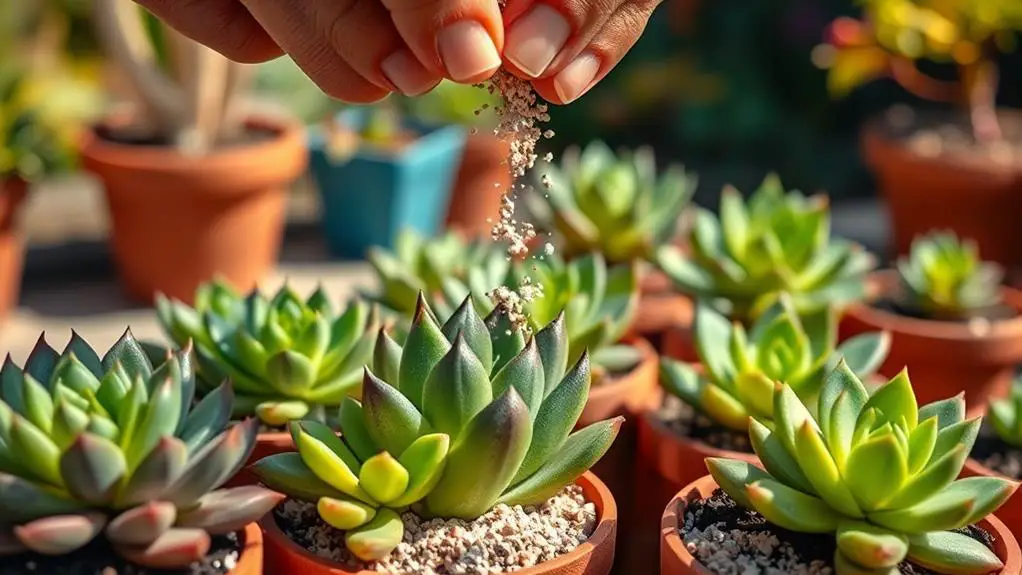
Understanding the fertilizing needs and practices for succulents is key to ensuring they thrive. Succulents aren't heavy feeders, but they still need some nutrients for healthy plant growth. During their active growing season, which is typically in spring and summer, you should fertilize them once a month. This helps promote both growth and blooming.
It's important to use a balanced fertilizer with an NPK ratio of 10-10-10 or 20-20-20. Dilute it to half strength before applying it around the base of your plants. Indoor succulents benefit from fertilization every 2-4 weeks, while outdoor succulents might need it less frequently due to natural nutrient availability.
Remember, succulents naturally thrive in nutrient-poor soils, so during their dormant period in fall and winter, you should withhold fertilization. Over-fertilizing during this time can harm your plants and stunt their growth.
Keep an eye on your succulents' health. If you notice signs of nutrient deficiencies, like yellowing leaves or weak growth, adjust your fertilization routine. Monitoring plant health and responding to these signs will help you maintain a thriving succulent garden.
With the right fertilization practices, your succulents will flourish beautifully!
Application Techniques

Properly applying fertilizer to your succulents is essential for their health and growth. Here's how you can do it effectively:
- Liquid Fertilizer: When using a liquid fertilizer, always dilute to half strength before application. Apply it around the base of the plant, and make sure to avoid contact with leaves and stems to prevent damage.
- Water Before Fertilizing: Water the succulent thoroughly before you apply any fertilizer. This promotes even distribution and prevents root burn from concentrated nutrients.
- Granular Fertilizers: For granular fertilizers, follow the package instructions for the correct application rates. After applying, water the soil to help activate the nutrients, making them available to the plant.
- Active Growing Season: Apply fertilizer during the active growing season (spring and summer) every 2-4 weeks. Avoid fertilizing during the dormant period (fall and winter) to prevent over-fertilization issues.
Remember to monitor plant health regularly. This helps you adjust your fertilization techniques, promoting ideal growth and avoiding over-fertilization issues.
Using the right plant food and proper application techniques will keep your succulents thriving. With these steps, you'll be well on your way to having healthy and beautiful succulents. Happy gardening!
Timing and Frequency
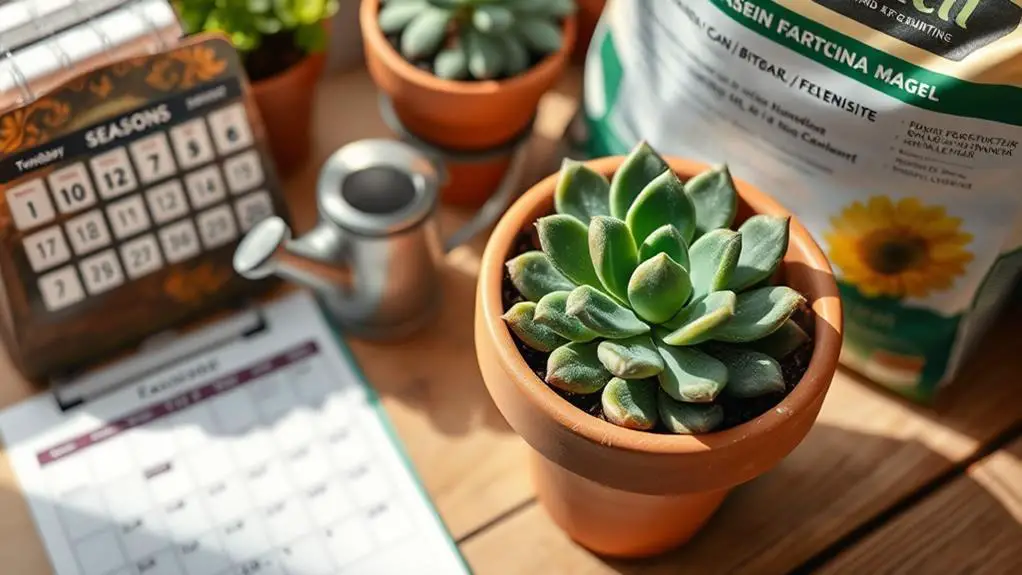
When fertilizing succulents, timing and frequency are key to their health.
Start in the spring and early summer, fertilizing every 2-4 weeks with half-strength fertilizer.
During fall and winter, reduce or stop fertilizing, and always watch your plants to adjust based on their needs.
Active Growing Season
The importance of your succulents hinges on timely and consistent fertilization during their active growing season, typically from spring to early summer. This period is essential for promoting robust growth.
Fertilize your succulents every 4 to 8 weeks during this time to guarantee they receive adequate nutrients for peak health.
- Use a well-balanced fertilizer: A balanced mix at half strength prevents nutrient burn while still providing necessary nutrients for healthy growth.
- Timing is everything: Newly planted succulents should wait about six months to establish their root systems before starting any fertilization regimen.
- Monitor plant response: Watch for stunted growth, which may indicate a need for additional nutrients, or excessive leggy growth, which could suggest over-fertilization.
- Consistency counts: Regular fertilization every 4 to 8 weeks assures your succulents remain vigorous and healthy.
Dormancy Period Care
During the dormancy period in fall and winter, drastically reduce or entirely halt fertilization to align with your succulents' natural growth cycle. Your succulents aren't actively growing during this time, so they don't need extra nutrients. If you continue fertilizing, you might harm the plants instead of helping them.
Wait until you see signs of new growth before resuming any fertilization. In some cases, if your succulents are kept in warmer conditions, you can apply a very diluted fertilizer sparingly. However, this isn't necessary for most plants.
It's more important to observe your succulents' health and make care adjustments. Confirm they get enough light and moisture, but be careful not to overwater. Overwatering can lead to issues like stretching and leggy growth.
After the dormancy period ends, you can start fertilizing again. Use a balanced fertilizer and apply it every 4 to 8 weeks during the active growing season. Always water before application to help the plant absorb nutrients better.
Adjusting Based on Growth
As you move past the dormancy period and into the active growing season, it's important to adjust your fertilization routine based on your succulents' growth patterns.
During spring and summer, when succulents are in active growth, you should fertilize every 2-4 weeks. However, make certain to observe how your plants respond and adjust the frequency if needed.
Here are some key points to keep in mind:
- Timing: Fertilize every 2-4 weeks during the active growth season. Pay attention to how your succulents grow and adjust accordingly.
- New Plants: Don't fertilize newly planted succulents for the first six months. This allows their roots to establish without the stress of extra nutrients.
- Signs of Stress: Look for signs of stunted growth or discoloration. These may indicate a need for nutrient adjustment or increased fertilization.
- Dormant Period: During fall and winter, considerably reduce or stop fertilizing. Succulents need less during their dormant period to avoid harm.
Consistently monitoring your succulents' growth and health is essential.
Each variety has specific needs, so by adjusting your fertilization routines, you'll guarantee your plants thrive.
Common Fertilization Mistakes
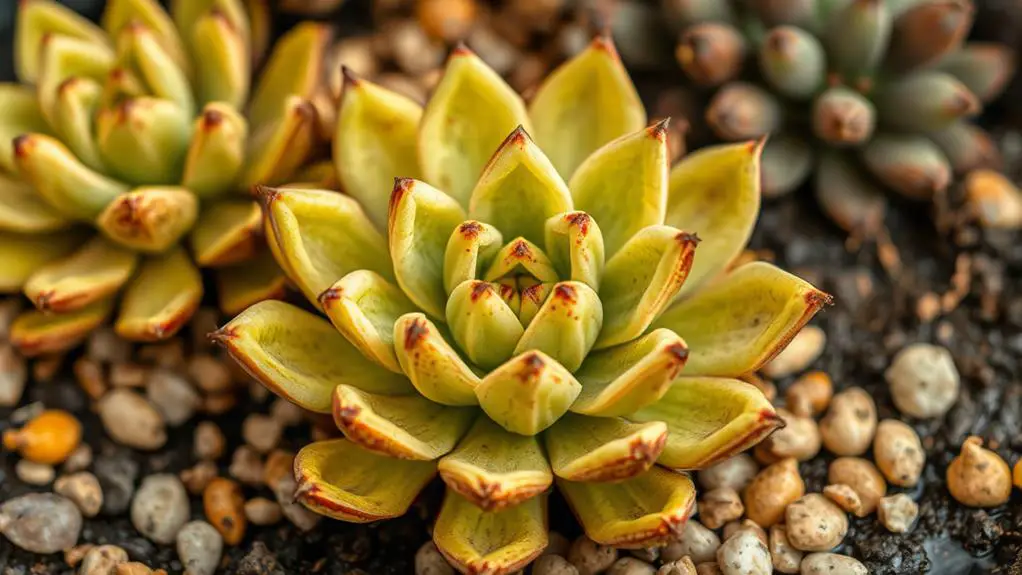
It's easy to make mistakes when fertilizing succulents, but understanding some common issues can help you avoid them.
Over-fertilization can harm your plants by causing root burn and salt buildup, while using slow-release fertilizers in winter can mess with their natural rest period.
Also, remember that each succulent has unique needs, so knowing your plant and adjusting your care accordingly is key.
Over-fertilization Risks
When it comes to fertilizing succulents, over-fertilization poses significant risks that can severely impact their health. Applying too much fertilizer can lead to nutrient burn, causing leaf discoloration, wilting, and other damage.
Excessive fertilizer application can also create salt buildup in the soil, which harms roots and leads to root rot and other growth issues.
To help you avoid these pitfalls, keep an eye out for the following signs of over-fertilization:
- Stunted Growth: If your succulent stops growing or grows very slowly, it might be receiving too much fertilizer.
- Yellowing Leaves: Leaves that turn yellow can indicate nutrient overload.
- Pest Susceptibility: Over-fertilized plants often become more attractive to pests.
- Salt Buildup: Crusty deposits on the soil surface suggest excess salts, which can damage roots.
To guarantee healthier growth, it's wise to use half-strength or quarter-strength fertilizers. This approach reduces the risk of over-fertilization.
Also, monitoring plant response regularly helps you adjust your fertilization routine as needed. Remember, less is often more when it comes to feeding succulents.
Slow Release Pitfalls
Many succulent enthusiasts might think that slow-release fertilizers are a foolproof way to nourish their plants, but they come with their own set of challenges. One major issue is the continuous feeding during the dormant winter months. Succulents thrive on a rest period without added nutrients, and slow-release fertilizers can disrupt this, leading to stress and weak growth patterns.
Over-application of slow-release fertilizers can also cause the accumulation of salts in the soil. This buildup can damage succulent roots and lead to dehydration.
Another problem is the high nitrogen levels often found in these fertilizers. Excessive nitrogen can cause your succulents to grow leggy and less compact, which isn't ideal.
It's essential to follow package instructions carefully and adjust the amount of fertilizer based on your plant's specific needs. This helps avoid nutrient imbalances that can harm your succulents.
Improper application of slow-release pellets can also interfere with the natural dormancy cycle, adding more stress to your plants.
Seasonal Adjustment Needs
While slow-release fertilizers pose their own challenges, understanding how to adjust fertilization based on seasonal needs is equally important.
Over-fertilizing succulents during their dormant period in fall and winter can lead to root burn and salt accumulation in the soil, negatively impacting plant health. It's vital to be mindful of your succulents' growth cycle and adjust fertilization accordingly.
Here are four key points to help you make the right seasonal adjustments:
- Observe Dormancy Periods: In fall and winter, most succulents go dormant and require minimal or no feeding. During this time, the nutrient levels should be kept low to avoid root damage and salt buildup.
- Increase Feeding in Warmer Months: Succulents are more active in spring and summer, needing more frequent feeding. Adjust your fertilizer application to match their increased nutrient needs during these growth cycles.
- Consider Local Climate: Your local climate affects how often you should fertilize. Warmer climates may require more frequent adjustments to avoid nutrient deficiencies or excesses.
- Understand Specific Needs: Different succulent varieties have specific nutrient requirements. Research the specific needs of your plants to avoid over-fertilizing or under-fertilizing them.
Frequently Asked Questions
What Is the Best Way to Fertilize Succulents?
You should use a balanced, water-soluble fertilizer with a 10-10-10 or 20-20-20 NPK ratio, diluted to half strength. Fertilize once a month during spring and summer. Water the soil before and after application.
Is It OK to Use Miracle Grow on Succulents?
Yes, you can use Miracle-Gro on succulents. Just dilute it to half strength and apply once a month during the growing season. Confirm you water the plants first to aid nutrient absorption and avoid root burn.
Are Coffee Grounds Good Fertilizer for Succulents?
Yes, coffee grounds can be good for succulents if used correctly. Mix them into the soil to improve structure and promote growth. Avoid overuse to prevent soil salinity issues and always monitor your plant's response.
Is Epsom Salt a Good Fertilizer for Succulents?
Epsom salt can benefit succulents by providing essential magnesium for chlorophyll production. Dilute it with water monthly, but don't overuse it. Monitor your plants' response, as some succulents might prefer a complete fertilizer instead.
Conclusion
Fertilizing your succulents doesn't have to be complicated. By choosing the right fertilizer and following proper application techniques, you'll help your plants thrive. Remember to adjust based on the season and keep an eye out for signs of over-fertilizing. You've got the knowledge now, so feel confident in your ability to grow healthy, beautiful succulents. With a little care and attention, your plants will reward you with vibrant growth and stunning displays. Happy gardening!

